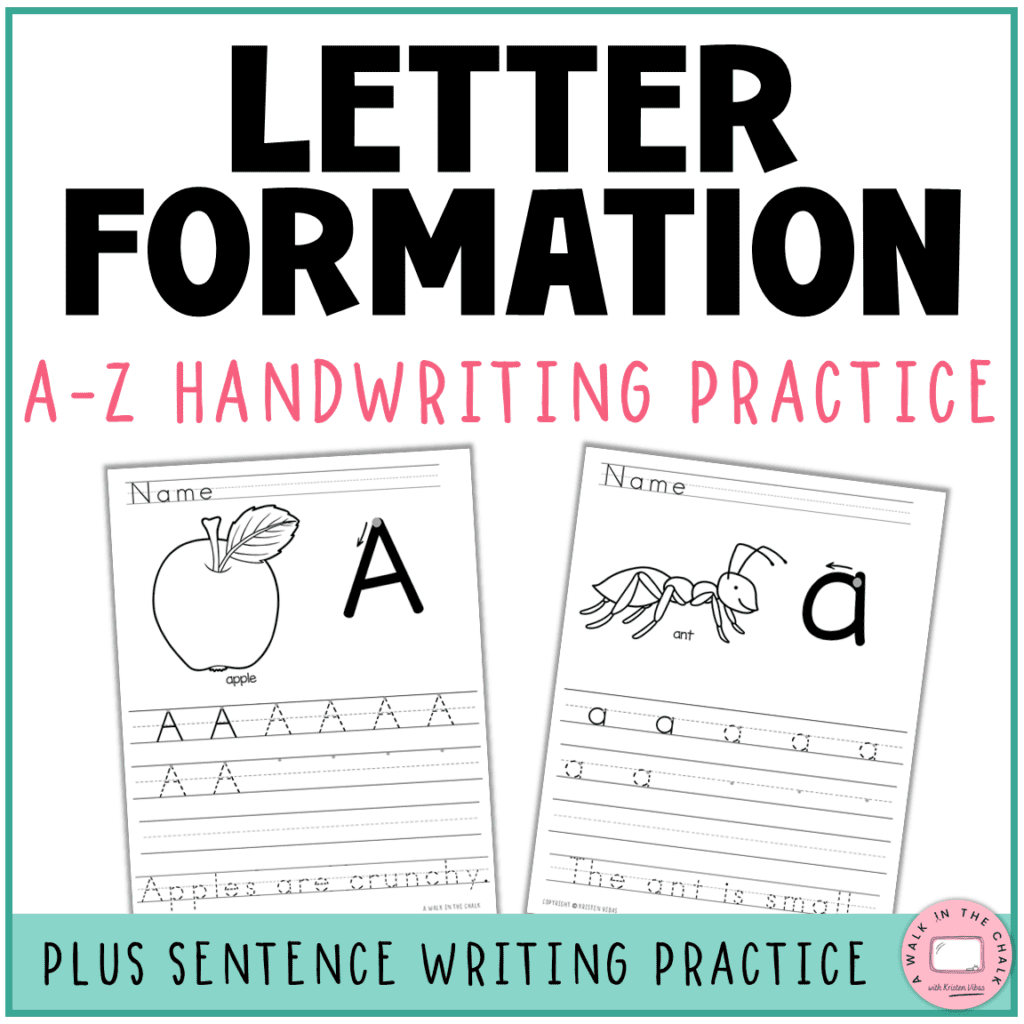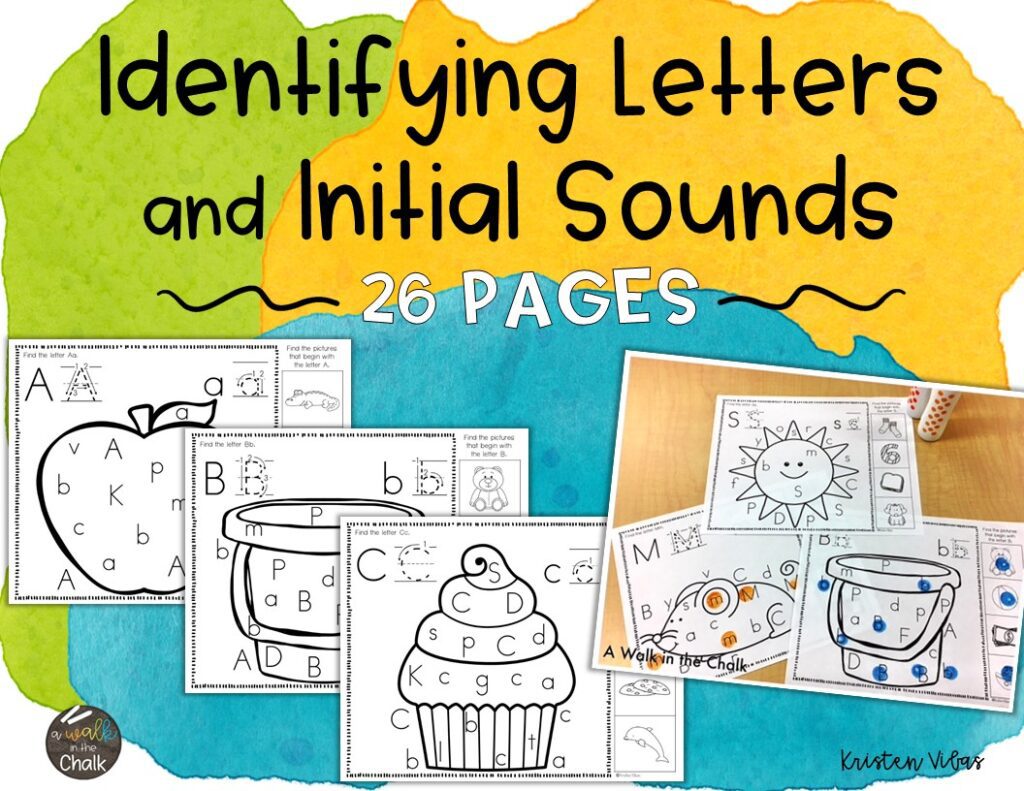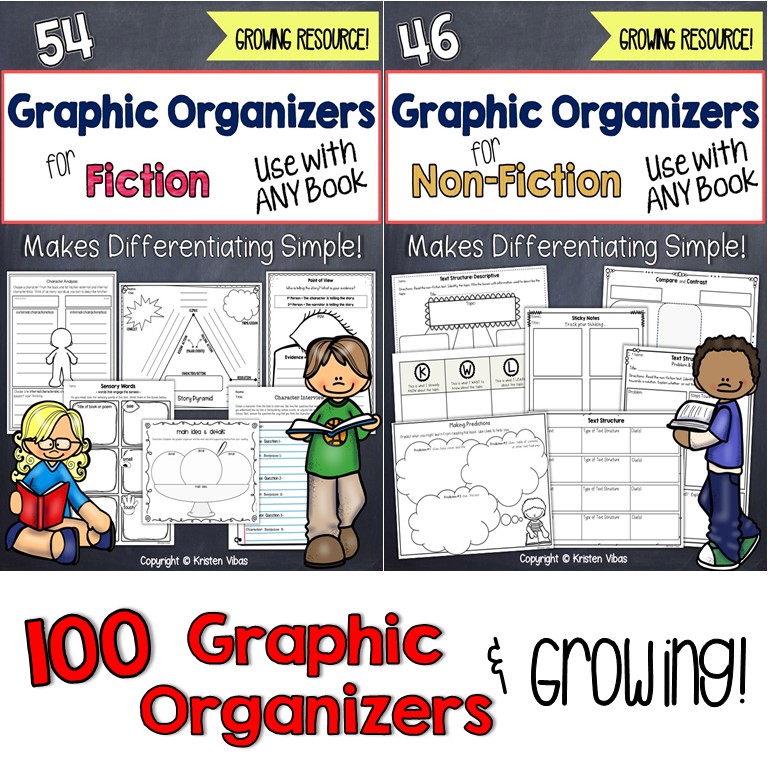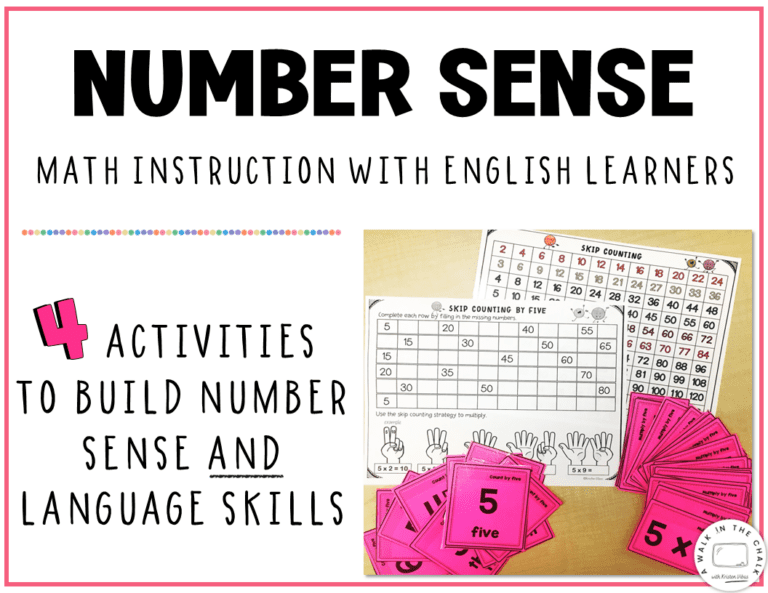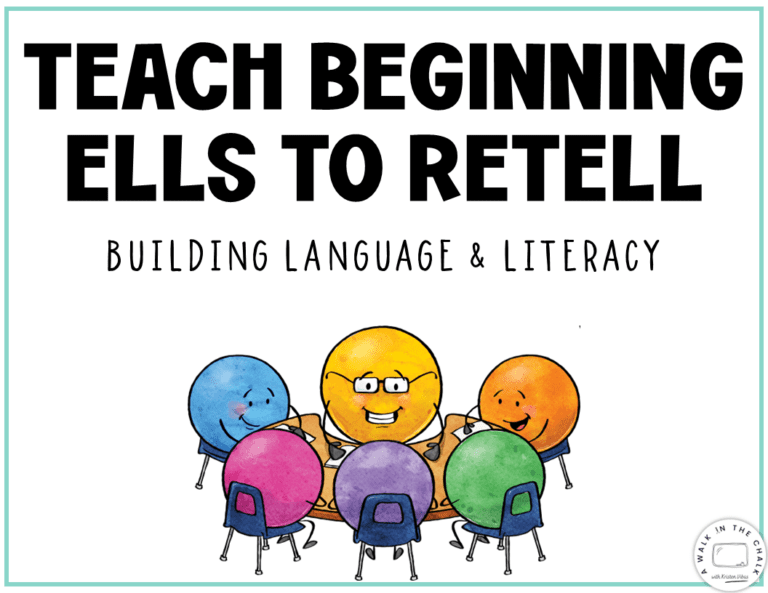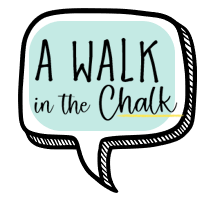Managing the ELD lesson planning process can be a challenge for ESL teachers, especially when unsure where to begin. One way to make planning for our English learner groups more manageable is to have an effective format, or structure, that you can simply plug in lesson components and go. Sound good? Great! — because I’ve got a highly effective ELD lesson planning format that’ll help you plan out your lessons! 🙌
There are 5 categories of lessons/activities that I incorporate into my ELD instruction throughout the year.
- On-Going Weekly Activities
- Warm-Up Activities
- Language Function Unit Lessons
- Stand Alone ELD Lessons
- “Go-To” Lesson Activities
Today’s focus in on “Stand Alone ELD Lessons,” one of my favorite types of lessons!
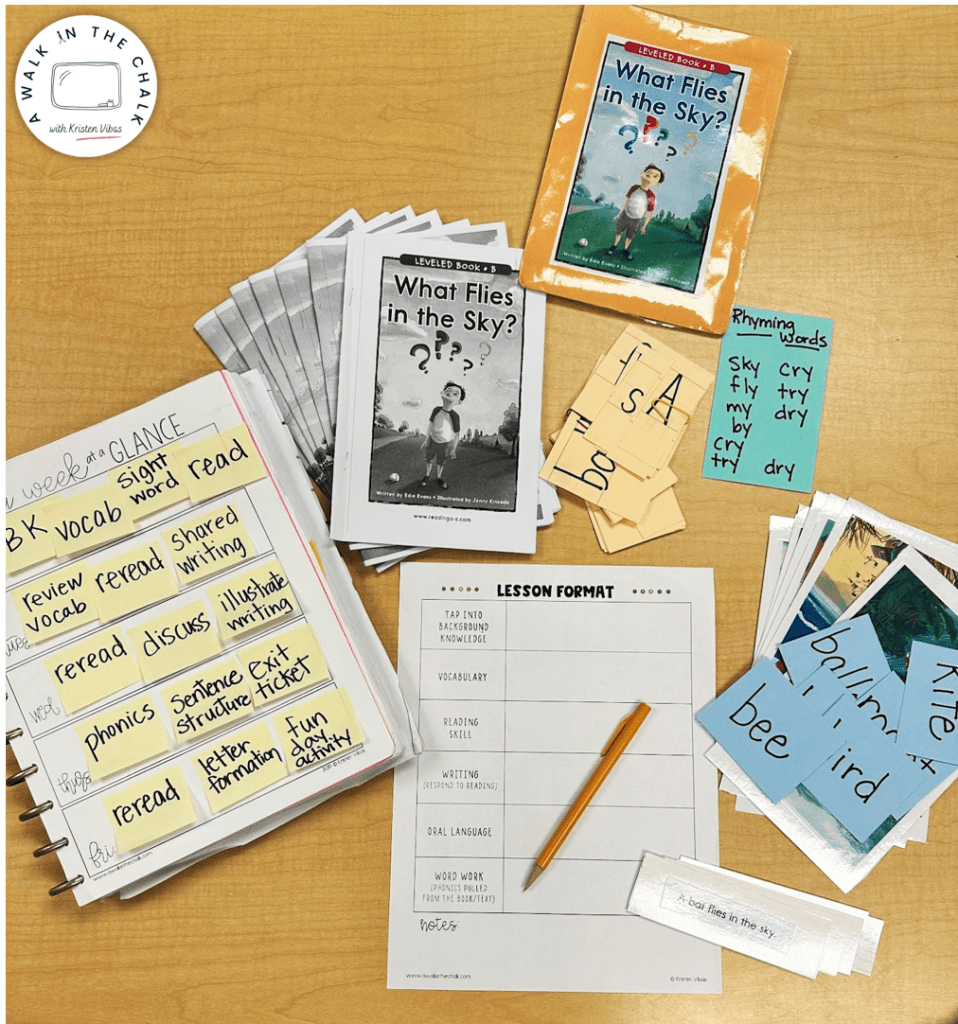
What’s a Stand Alone ELD Lesson?
A stand alone ELD lesson is a lesson that focuses on a book or text and follows a specific structure with designated activities on certain days. It incorporates all language domains, can be spread across several days and is effective in targeting students’ language and literacy needs.

A stand alone lesson can be planned for any grade level or proficiency group, but it’s definitely my main structure for primary and upper elementary newcomer and ELP level 1-2 groups.
It can be connected to content or language functions, but it doesn’t have to be. It’s strong, effective and can stand on its own.
The Components of an Effective ELD Lesson
No matter which book or text you select for students, these are the daily lesson components.
- Day 1 – background knowledge, vocabulary, reading
- Day 2 – review vocabulary, finish reading or reread, respond to reading (writing)
- Day 3 – reread, phonics or word work, speaking activity
This could EASILY be modified to stretch out over 4 or 5 days, but I usually use the fifth day for some kind of fun activity or “game day.”
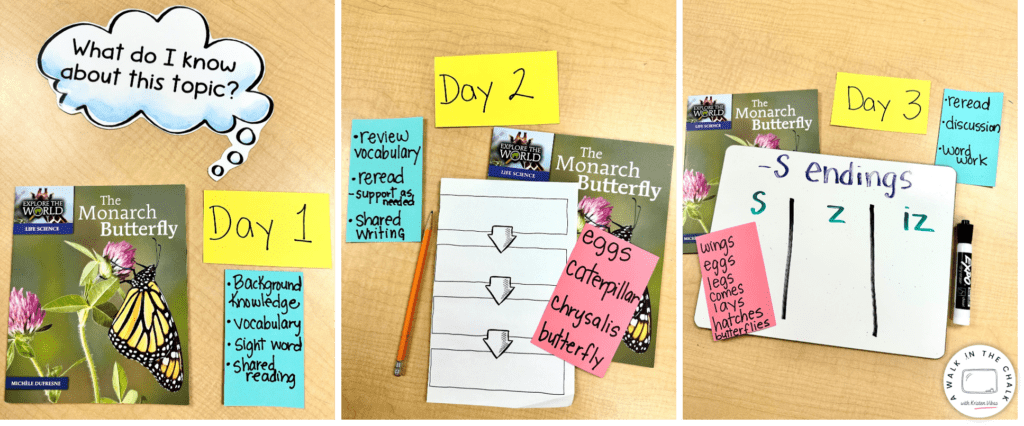
Other components that I often add for my primary and newcomer groups are a sight word on Day 1 and sentence structure on Day 2. I also add letter formation or a phonemic awareness activity with my K-1 beginners.
This ELD lesson format provides me with a whole week of activities. 🙌 I don’t need to think about WHAT I’m teaching, all I need to do is first pick out an appropriate book or text and plug in the activities! The variety of activities keeps my students engaged, and the consistency of the structure provides them with familiarity with what to expect each day.

Day 1: Background Knowledge
Day 1: After choosing a book that is relevant to your students, building background knowledge could be as simple as asking “What do you know about _______?” Sometimes I find a short video on the topic to build background knowledge, but I try to incorporate books that I think my students already have some knowledge on.

Intro the book – “Today we’re going to be learning about the Monarch butterfly and the different stages in its life cycle. Let’s look at some important vocabulary first.” Most of the books I use have an illustrated glossary so we start there, saying the words and repeating them.
If I’m using a Reading A-Z book, which I love to use with my K-1 groups, then I print out a color copy of the book and cut out the pictures from the book to make vocab cards. Here’s a post on that;)
Sight Word – Next I point out a repeated sight word in the book and we practice reading that word. If it’s a Reading A-Z book, they’ll hunt for and highlight the word.
Reading – We read the book together on day 1, either with echo reading (I read and they echo it back), choral reading (we read together) or shared reading (I read some and they read some). Reading is moderately to heavily scaffolded on this introductory day for my beginners.
Day 2: Shared Writing
After a quick review of the vocabulary, sight word and the reading, students reread the text with support as needed. The focus on day two is writing. They respond to their reading, usually by filling in a graphic organizer or writing sentences about the topic. For my beginning students, this is a shared writing activity.
Talking about their responses first will help them focus on what to write. If it’s sequencing a life cycle, for example, we will talk about what happens first, then write about it.
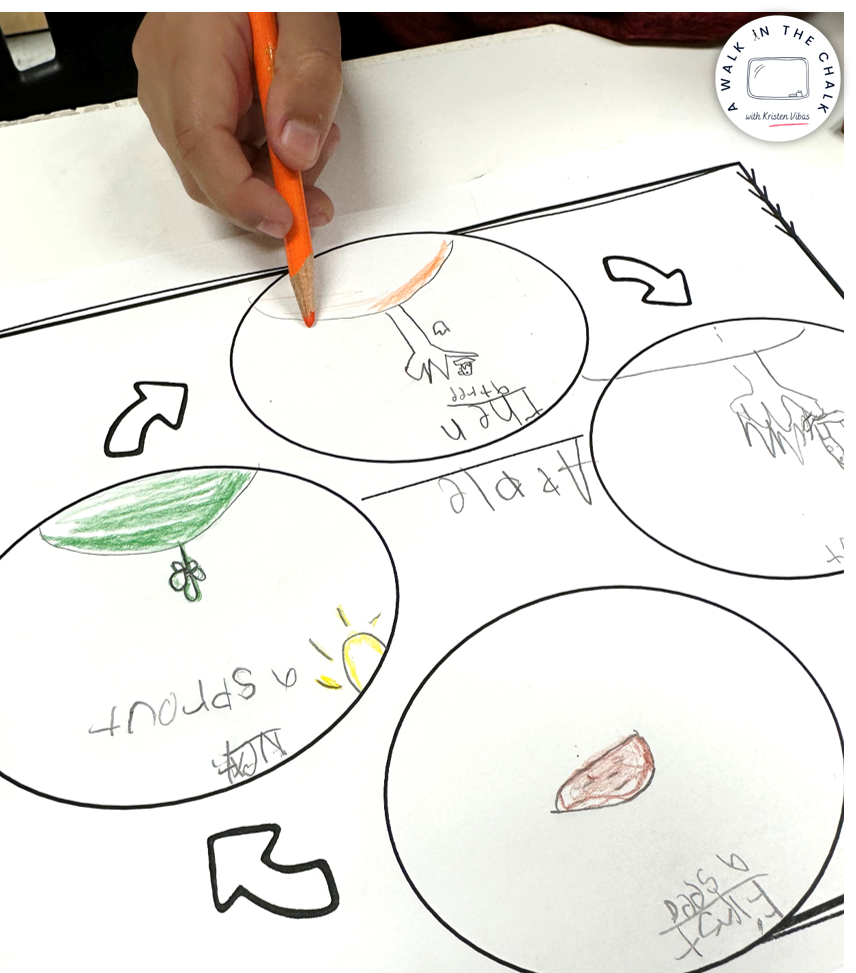
For my older newcomers, I’ll elicit an oral response from them, then will write it with correct grammar for them to copy.
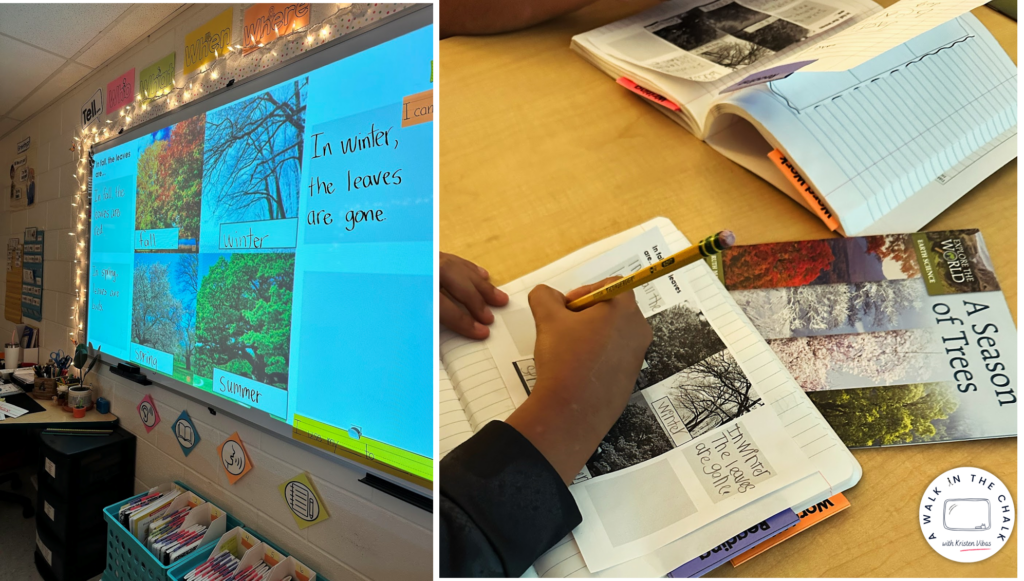
As students’ language proficiency levels increase, the amount of scaffolds and supports decrease; shared writing becomes independent writing, as does reading.
Day 3: Phonics Lesson
A phonics skill is always pulled from the book or text. Learning and practicing this skill in context is important as it adds relevance to the learning. This will look different depending on the age and language proficiency of each group.
My kindergarteners might have a letter identification or an initial or ending letter sound activity. My first graders might have a word family list or a short vowel focus in CVC words. My older newcomers might have word endings, singular vs plural nouns, or short vs long vowels.
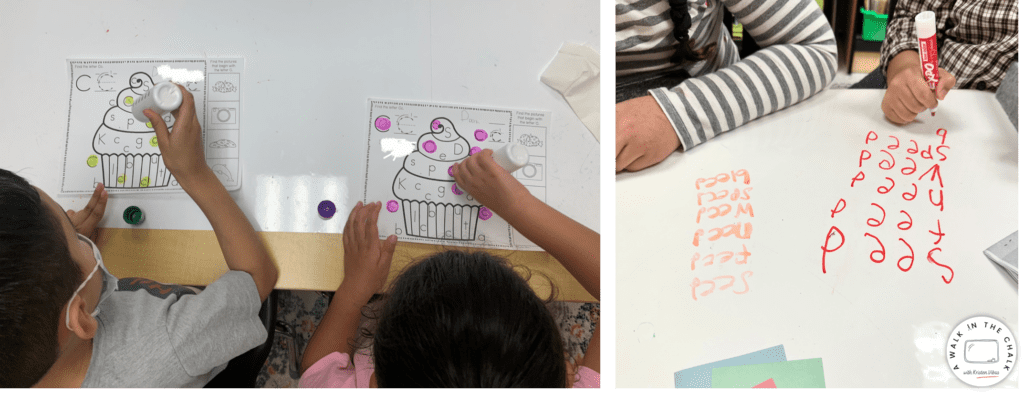
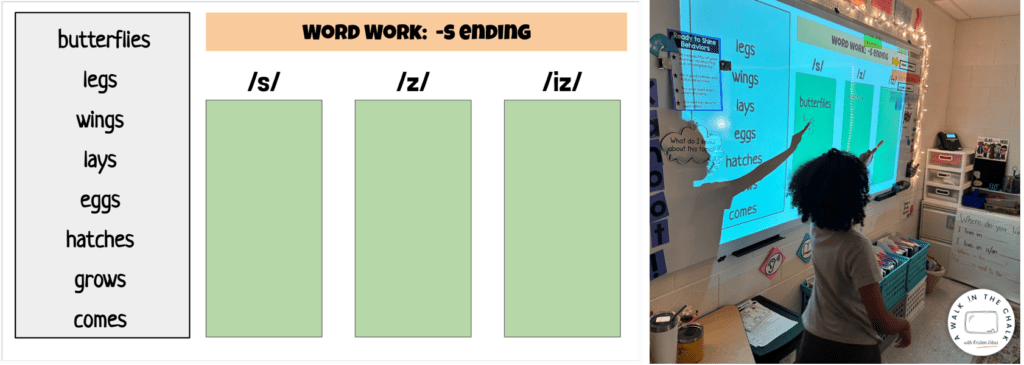
It depends on what each group needs, but the phonics skill always comes from our book.
How would this structure look with higher level MLs?
The lesson components are the same, but the text would be higher.
- background knowledge
- frontload vocabulary (usually with a graphic organizer)
- introduce the book and set a purpose for reading
- read the book, text or article (chunking for support)
- respond to reading (orally and in writing)
- discussion
- phonics or word work pulled from the text
I also spend more time on the pre-reading vocabulary activity through explicit instruction, and the writing expectations are be higher. They’d be writing independently with perhaps the support of a sentence starter and word bank. Lastly, if it’s a shorter article, we might get through the components in 2 days.
A Lesson Structure That Works
Having a lesson planning structure that moves students along and builds language AND literacy skills is gold. 🥇 This structure has taken the stress out of lesson planning for me.
Knowing your students’ needs in each language domain is key to successfully implementing this structure. That will allow you to differentiate and provide the appropriate amount of scaffolds and really target their language skills.
Here are a few more pictures of various lessons I’ve done using this structure for my “stand alone” ELD lessons.

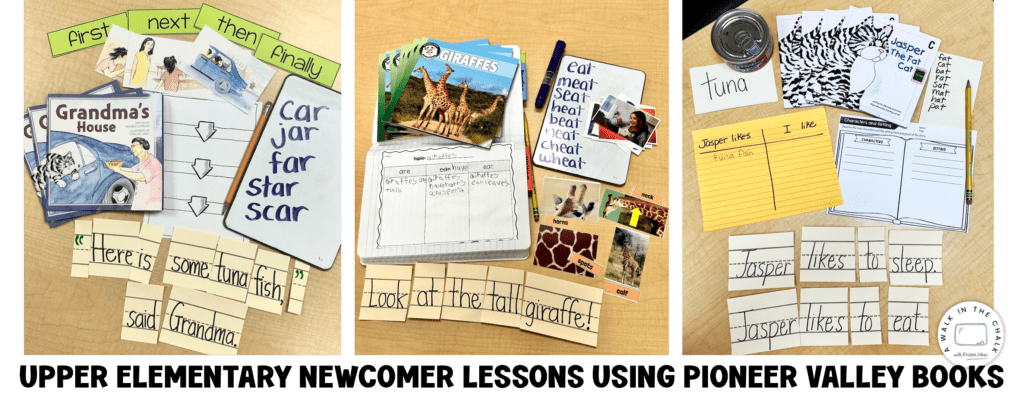
Give this “Stand Alone” ELD lesson planning structure a try and let me know how it works for you!🙌 Grab this lesson planning template to get started;)
Happy Planning!✨

👇Resources found in this post
